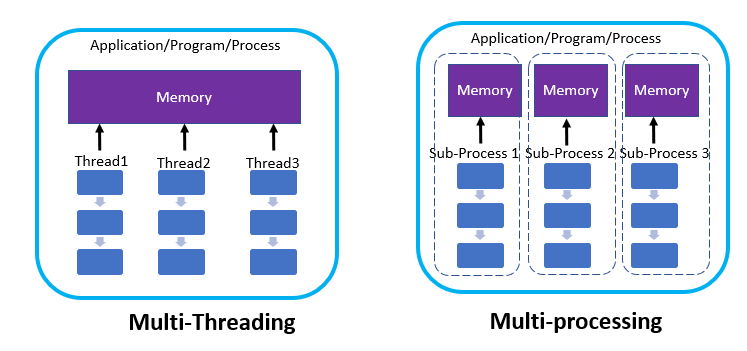In this article, you will learn
- Difference between Multi-Threading and MultiProcessing and when to use them
- Implement MultiProcessing in Python using multiprocessing and concurrent.futures
What is MultiProcessing?
- Multiprocessing allows you to spawn multiple processes within a program.
- It allows you to leverage multiple CPU cores on your machine
- Multiple processes within a program do not share the memory
- Side steps the GIL(Global Interpreter Lock) limitation of Python which allows only one thread to hold control of the Python interpreter
- Used for computation or CPU intensive programs
then what is Multi-threading and when to use it?
A Thread is the
- Smallest set of independent commands executed in a program
- Multiple threads within an application can execute simultaneously on a CPU referred to as MultiThreading
- Runs always within a program and cannot run on its own
- Used when programs ar network bound or there is heavy I/O operation
- Memory is shared between multiple threads within a process and hence has lower resources consumption

Below is the code to demonstrate that Multiprocessing does not share a memory, whereas Multi-Threading shares memory.
In the piece of code below, we check if the number passed in the list is a prime number or not. We will do this using both Multi-threading as well as using Multiprocessing
#python #developer

5.15 GEEK